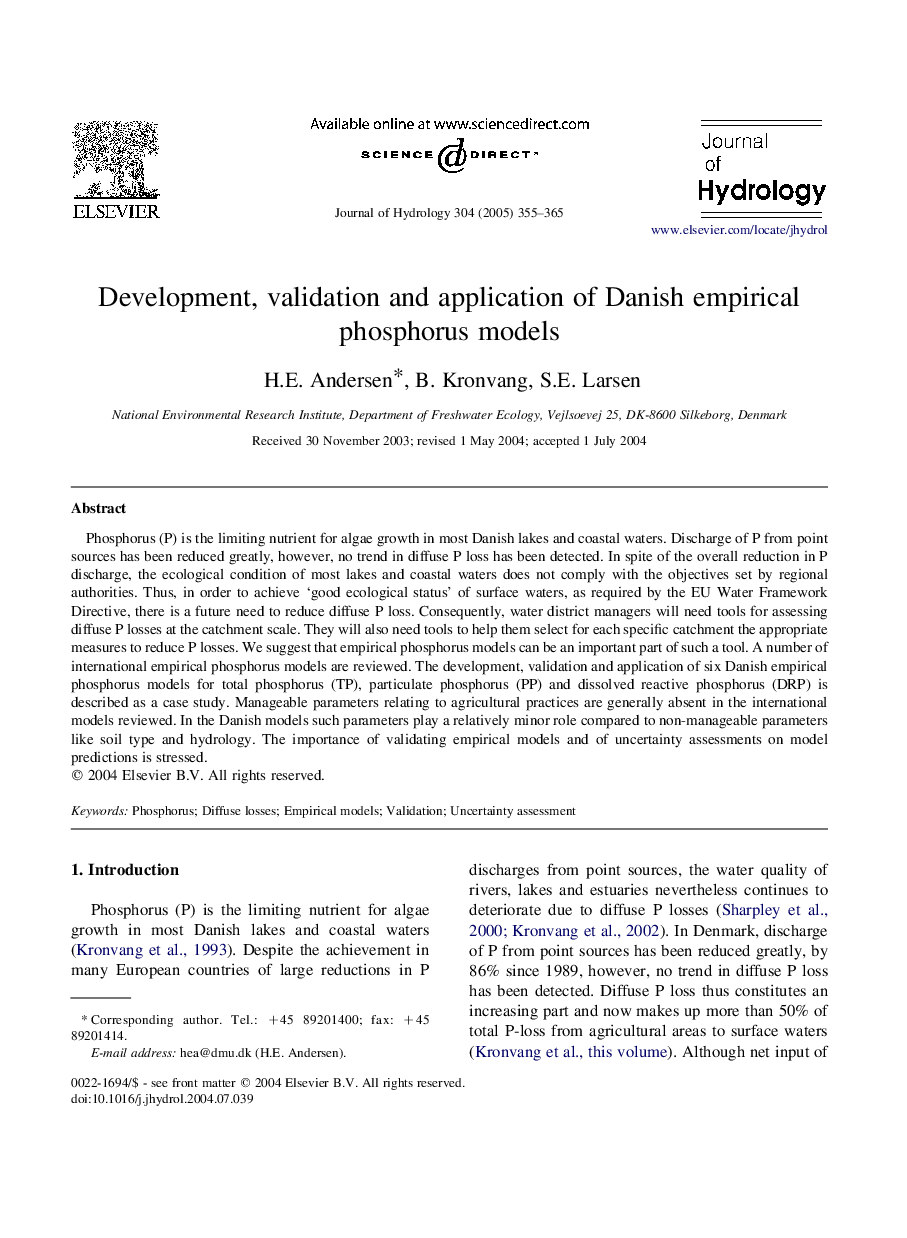| Article ID | Journal | Published Year | Pages | File Type |
|---|---|---|---|---|
| 9491548 | Journal of Hydrology | 2005 | 11 Pages |
Abstract
Phosphorus (P) is the limiting nutrient for algae growth in most Danish lakes and coastal waters. Discharge of P from point sources has been reduced greatly, however, no trend in diffuse P loss has been detected. In spite of the overall reduction in P discharge, the ecological condition of most lakes and coastal waters does not comply with the objectives set by regional authorities. Thus, in order to achieve 'good ecological status' of surface waters, as required by the EU Water Framework Directive, there is a future need to reduce diffuse P loss. Consequently, water district managers will need tools for assessing diffuse P losses at the catchment scale. They will also need tools to help them select for each specific catchment the appropriate measures to reduce P losses. We suggest that empirical phosphorus models can be an important part of such a tool. A number of international empirical phosphorus models are reviewed. The development, validation and application of six Danish empirical phosphorus models for total phosphorus (TP), particulate phosphorus (PP) and dissolved reactive phosphorus (DRP) is described as a case study. Manageable parameters relating to agricultural practices are generally absent in the international models reviewed. In the Danish models such parameters play a relatively minor role compared to non-manageable parameters like soil type and hydrology. The importance of validating empirical models and of uncertainty assessments on model predictions is stressed.
Related Topics
Physical Sciences and Engineering
Earth and Planetary Sciences
Earth-Surface Processes
Authors
H.E. Andersen, B. Kronvang, S.E. Larsen,
